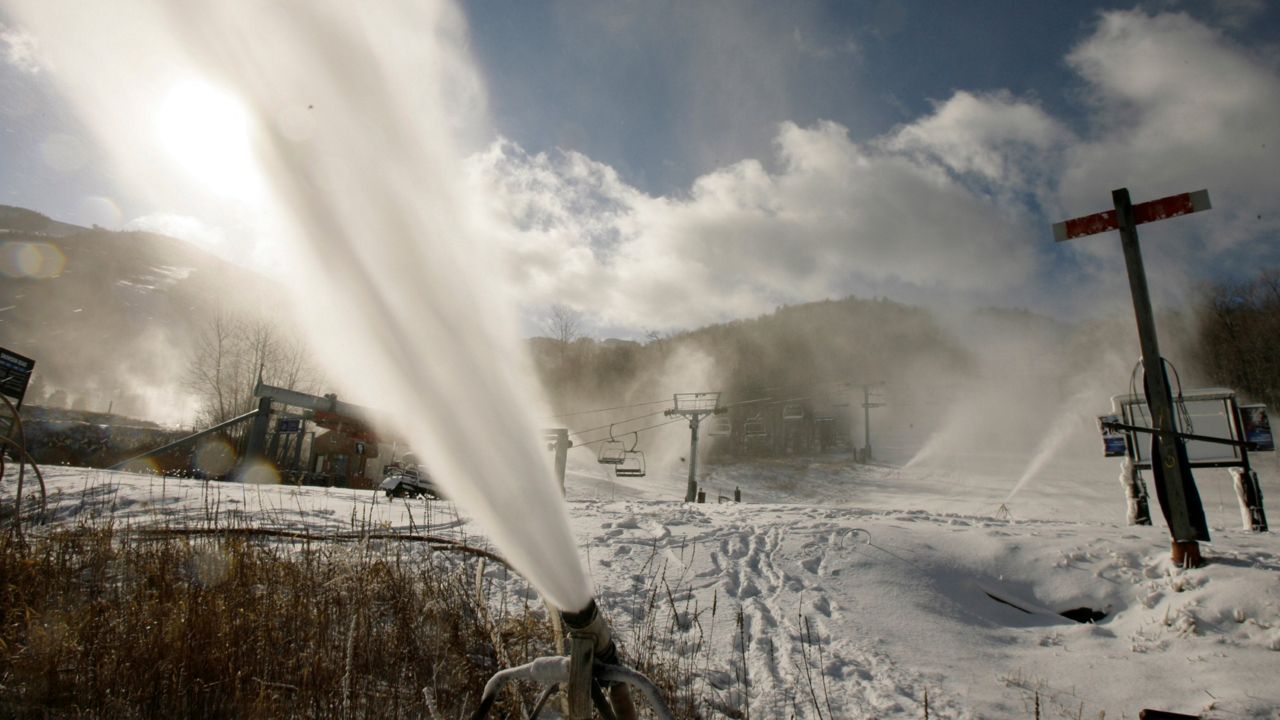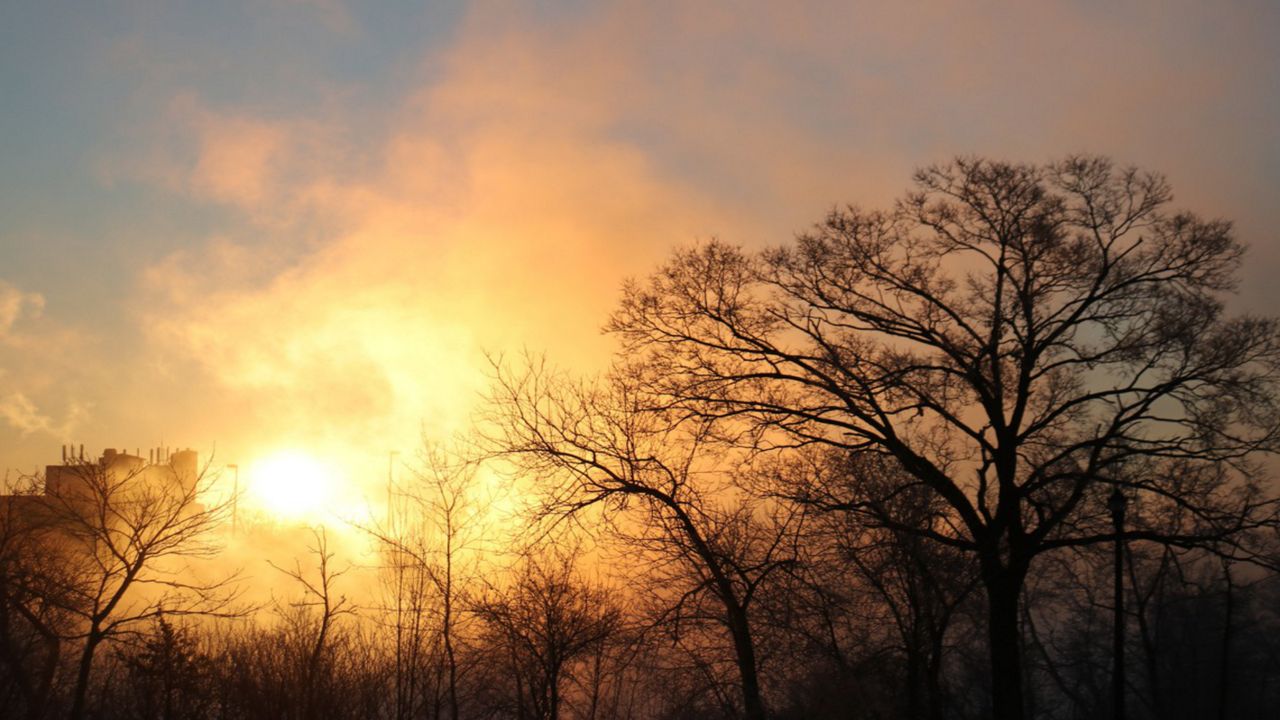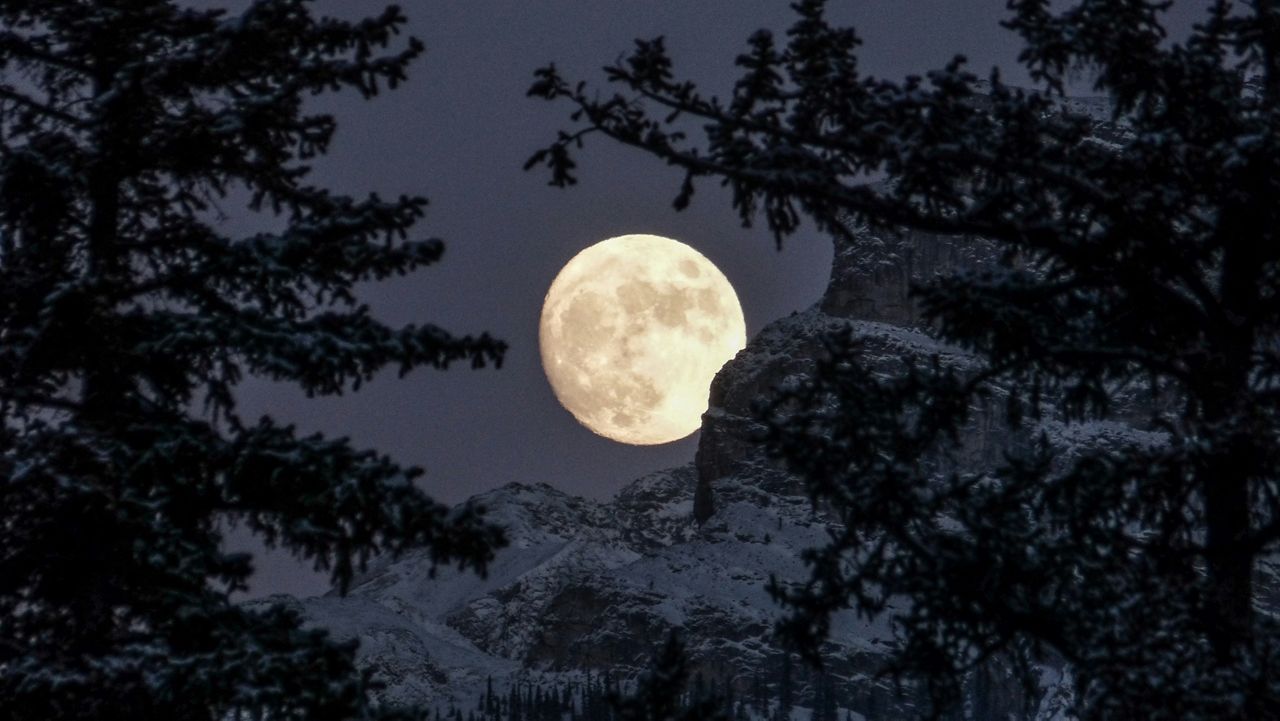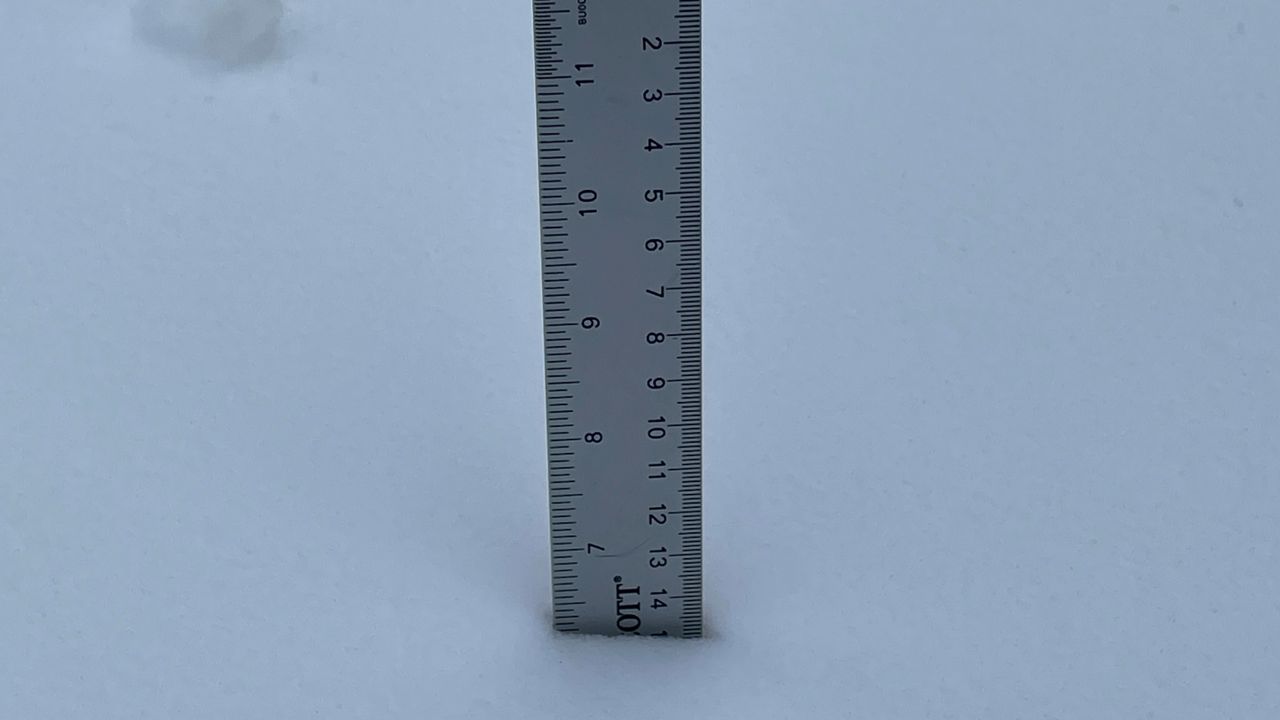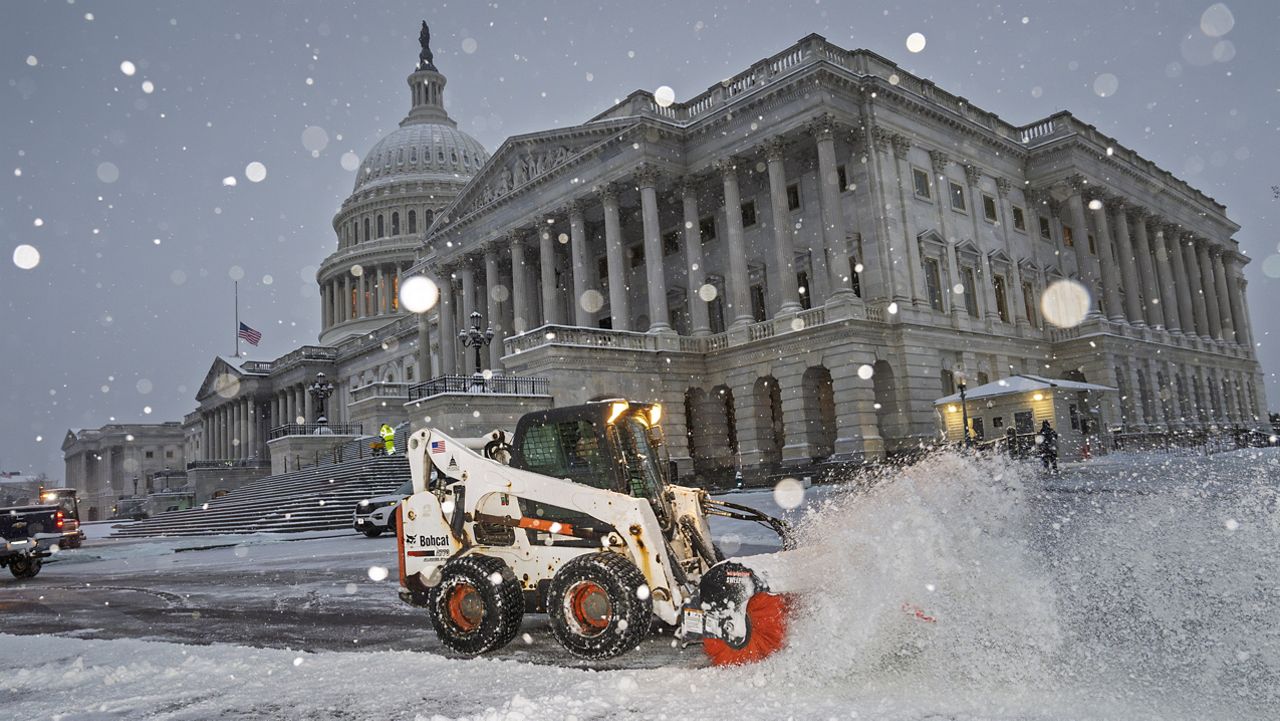Most snow falls out of the clouds, but some snow is shot out of a cannon.
Ski resorts need snow to operate and Mother Nature doesn’t always cooperate. That’s when they take matters into their own hands.
Resorts often use snow cannons or snow guns to make their own snow.
These snow machines force water through a nozzle or blow it with a powerful fan, which turns the water into tiny droplets. These droplets then freeze into bits of ice.
Snow machines use thousands of gallons of water, so they take a lot of power. Between cold temperatures, wind, and the snow itself, working with snow machines takes quite a bit of effort.
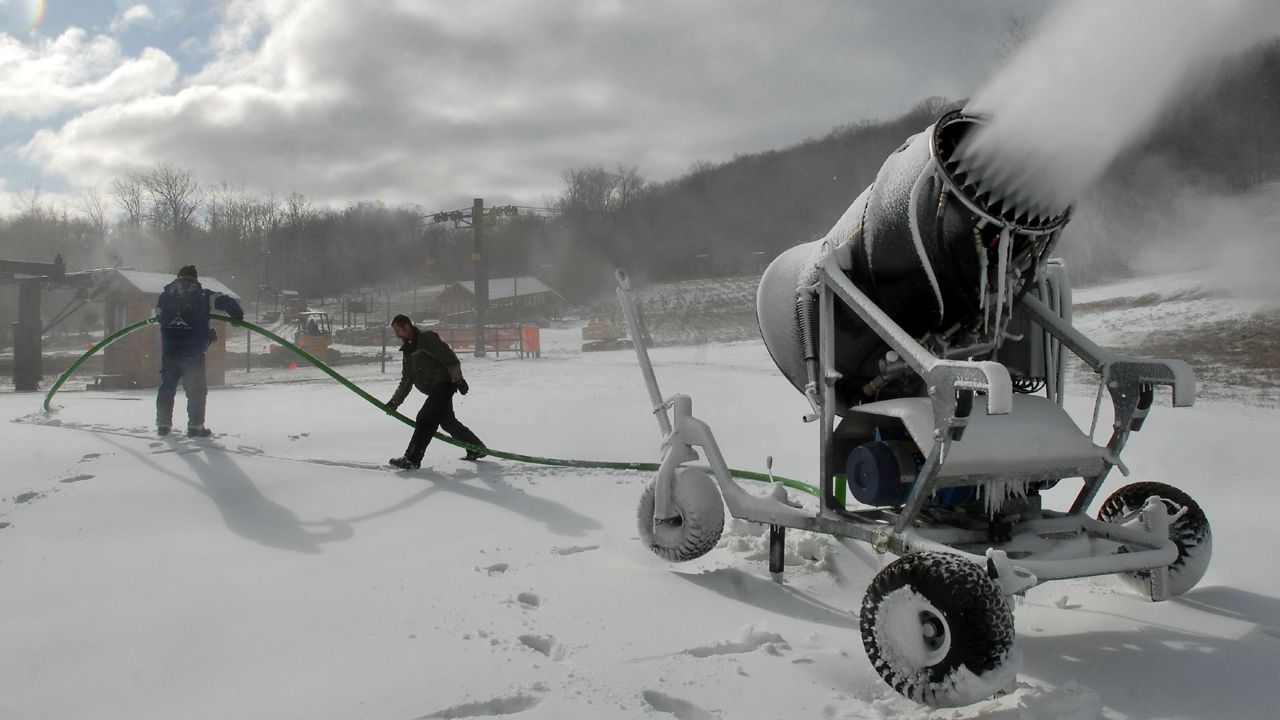
Some weather conditions are better than others for making snow.
Maren Franciosi with Colorado’s Steamboat Ski Resort says that cold weather with low humidity is ideal. “Right around 8 degrees with low humidity is the sweet spot,” she adds.
Franciosi notes that temperatures below 5 degrees are still good for making snow, but keeping the system from freezing up becomes a challenge.
What about the flip side? A web-bulb temperature – basically, a combination of air temperature and moisture – above 25 degrees gets iffy. At that point, the temperature is often too warm or the humidity is too high to make quality snow.
Unlike artificial snow, natural snow isn’t a water droplet that freezes into ice on its way to the ground.
Instead, a very cold droplet freezes onto a piece of dust, salt, pollen, or other small particles in the cloud, making a crystal. Water vapor sticks to the crystal, growing it into a snowflake.
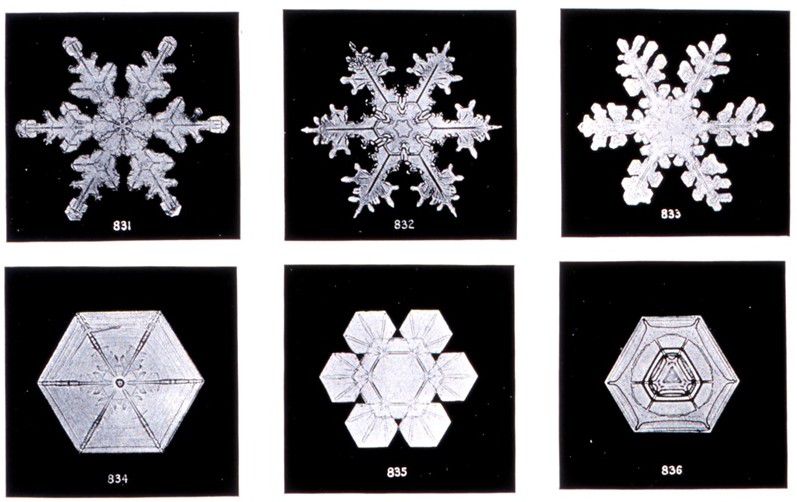
Some skiiers say they can tell a difference between natural and machine-made snow. Natural snow tends to be more powdery, while artificial snow is often more dense. Over time, though, they can blend together into a similar surface.
Whether you brave the black diamond runs or casually descend the bunny hill, you may very well be skiing on at least some artificial snow.



